What is a commercial property?
The term “commercial real estate” refers to property that is used for business purposes. Commercial property typically refers to structures that house businesses, although it can also apply to money-making land and large residential rental homes. The way a property is financed, taxed, and governed is affected by its classification as a commercial property.
Commercial Real Estate Types
Commercial properties are divided into five groups based on their intended uses:
Retail
Highway frontage retail pad sites, single-tenant retail buildings, small neighborhood shopping centers, larger centers with anchor grocery stores, and “power centers” with large anchor stores such as Best Buy, PetSmart, OfficeMax, and others, as well as regional and outlet malls, fall into this category.
Industrial
Warehouses, big R&D facilities, refrigerated storage, and distribution centers fall under this category.
Healthcare
This category includes hospitals, clinics, and other commercial facilities that provide medical treatment.
Offices
Single-tenant properties, modest professional office buildings, downtown skyscrapers, and other types of office buildings fall into this category.
Leisure
This includes hotels, restaurants, pubs, and sports centers.
What is Commercial Property Depreciation?
Commercial property depreciation is a tax deduction that is available to commercial property owners and investors. Eligibility for commercial property depreciation depends on a number of factors, including the age, condition, and type of commercial building or structure. To determine your eligibility for commercial depreciation deductions, you will need to consult with your tax advisor or accountant. Commercial depreciation is an important tool for property investors. It allows them to recover the cost of their investment over time and can provide significant tax benefits.
There are two main types of commercial depreciation: plant and equipment depreciation and building depreciation.
Plant and Equipment Depreciation
Plant and equipment depreciation cover items such as air conditioners, carpets, lights, and other fixtures that are typically found within commercial buildings. This type of depreciation is calculated based on the depreciable value of each item, which is determined by its age and original cost.
Building Depreciation
Building depreciation refers to the overall wear and tear of commercial property over time. To calculate this type of depreciation, you will need to estimate the remaining hot water systems. These items have a limited useful life and will need to be replaced eventually.
To be eligible for commercial depreciation, a property must:
- Be used for business purposes
- Be held for more than 12 months
- Be located in Australia
What is a depreciation schedule for commercial real estate?
A depreciation schedule has the substantial benefit of assisting commercial property owners and tenants in maximizing tax depreciation deductions, hence increasing cash flow.
A depreciation schedule for commercial property is a report that shows the tax deductions you can claim on your investment property. You must first determine the value of a property, including all of its fittings and fixtures, in order to claim these deductions.
The purpose of a tax depreciation schedule is to demonstrate the value of your Division 40 and Division 43 assets, as well as how much they have depreciated and how much they will depreciate. This will give you an exact figure for how much you can claim.
Property investors, on the other hand, aren’t the only ones who care about it. You should prepare a tax depreciation schedule for your new fit-out as well as any equipment you’ve installed when leasing commercial property.


